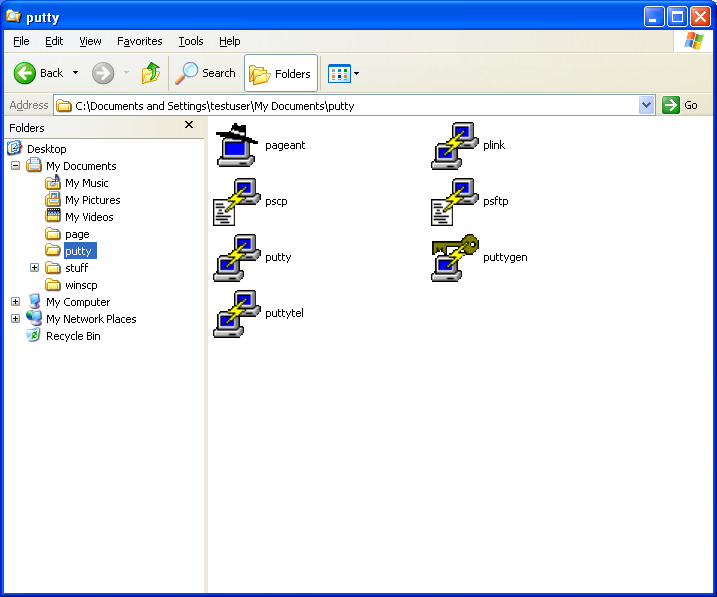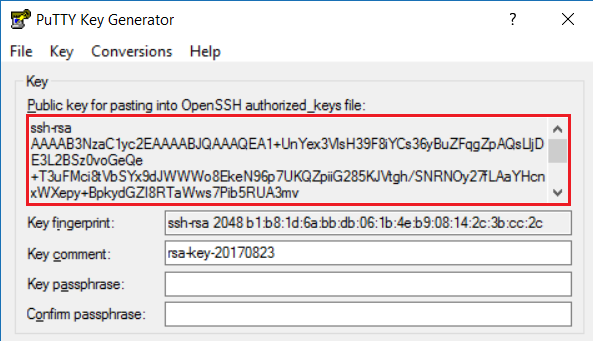

To generate a ppk file in mac, you will need to use a program like PuTTYgen. In order to connect to your cloud server, you do not need to use a third-party client such as PuTTY.

SSH is already included in the Terminal program included with MacOS X versions such as 10.8 or 10.9.
#PUTTYGEN MAC FOR FREE#
If you don’t have PuTTY installed on your Mac, you can get it for free by visiting the PuTTY website. PuTTY is a great tool for free use because it includes a wide range of features, it is free, and it can be run on a wide range of servers.
#PUTTYGEN MAC INSTALL#
You Don’t Need Putty To Connect To Your Cloud Server On Macos Xīefore connecting to your cloud server, you may need to install a third-party SSH client, such as PuTTY, which is available for older versions of MacOS X, such as 10.9 or 10.4. The saved OpenSSH key can now be transferred to your Mac. By clicking Export OpenSSH Key, you can now convert the key to OpenSSH. You will then be able to transfer the key you want to use to your Mac. In PuTTYGen, open the private key and then choose File -> Load private key. Then, click the Browse button next to the Private key for authentication field. In the Connection type field, select SSH. Once you have PuTTY installed, you can launch it and enter the hostname or IP address of your Mac. How Do I Connect My Ppk File To My Mac?Ĭredit: To connect your PPK file to your Mac, you will need to use an SSH client such as PuTTY. PuTTY Configuration can be used to encrypted and verify PPL files. PuttyGen is an application for Windows that allows you to convert from one language to another. On Macs, you can use SMTP directly, but the terminal must be connected first. Once you’ve done that, you’ll be logged in and ready to use the server.
#PUTTYGEN MAC PASSWORD#
You’ll be prompted to enter the username and password for the server. Finally, click on the “Open” button to connect to the Linux server. Click on the “Browse” button and select the PPK file that you generated earlier. Under the “SSH” options, select the “Auth” option. Next, click on the “Connection” menu and then select the “SSH” option. To do this, launch the PuTTY program on your Mac and enter the IP address or hostname of the server into the “Host Name” field. Now that you have the PPK file, you can use it to connect to the Linux server from your Mac. Finally, click on the “Save private key” button to save the PPK file to your Mac. Once you have the public key, enter it into the “Public key for pasting into OpenSSH authorized_keys file” field in PuTTYgen. You can get this from the server’s administrator. Next, you’ll need to provide PuTTYgen with the public key of the Linux server. You can do this by clicking on the “Generate” button. Once you have PuTTYgen downloaded, launch it and generate a new PPK file. This program will generate the PPK file that you’ll need to connect to the Linux server. First, you’ll need to download a program called PuTTYgen on your Mac. The good news is, it’s actually pretty easy to connect to a Linux server from a Mac using a PPK file.
#PUTTYGEN MAC HOW TO#
So type ssh -vvv to receive a load of debug info that can be really useful in determining where you are screwing up.If you’re a Mac user who’s been asked to connect to a Linux server, you may be wondering how to go about doing that. HANDY TIP: use the vvv flag to debug the ssh command (looks odd but thats 3 v’s by the way!). You may need to check that the key has the right permissions, type chmod -R g0-rx ~/.sshĮnter your ssh command, ssh and hit enter, you should get now have a SSH tunnel to your server. ssh directory if it does not already exist and copy the private key in here. Open terminal, and go to your root… usually does this automatically, but type cd ~/ just in case.Ĭreate a. Once you have your new private OpenSSH key, copy it to your Mac. You can convert your key by using the ‘Export to OpenSSH’ option explained in a previous post. The standard PuTTY generated key will not work on Linux or Mac OSX, so the key needs to be converted into a standard that will, like OpenSSH. I wanted to use the key I generated using the PuTTYGen tool on my windows laptop, on my now repaired Mac Pro.


 0 kommentar(er)
0 kommentar(er)
